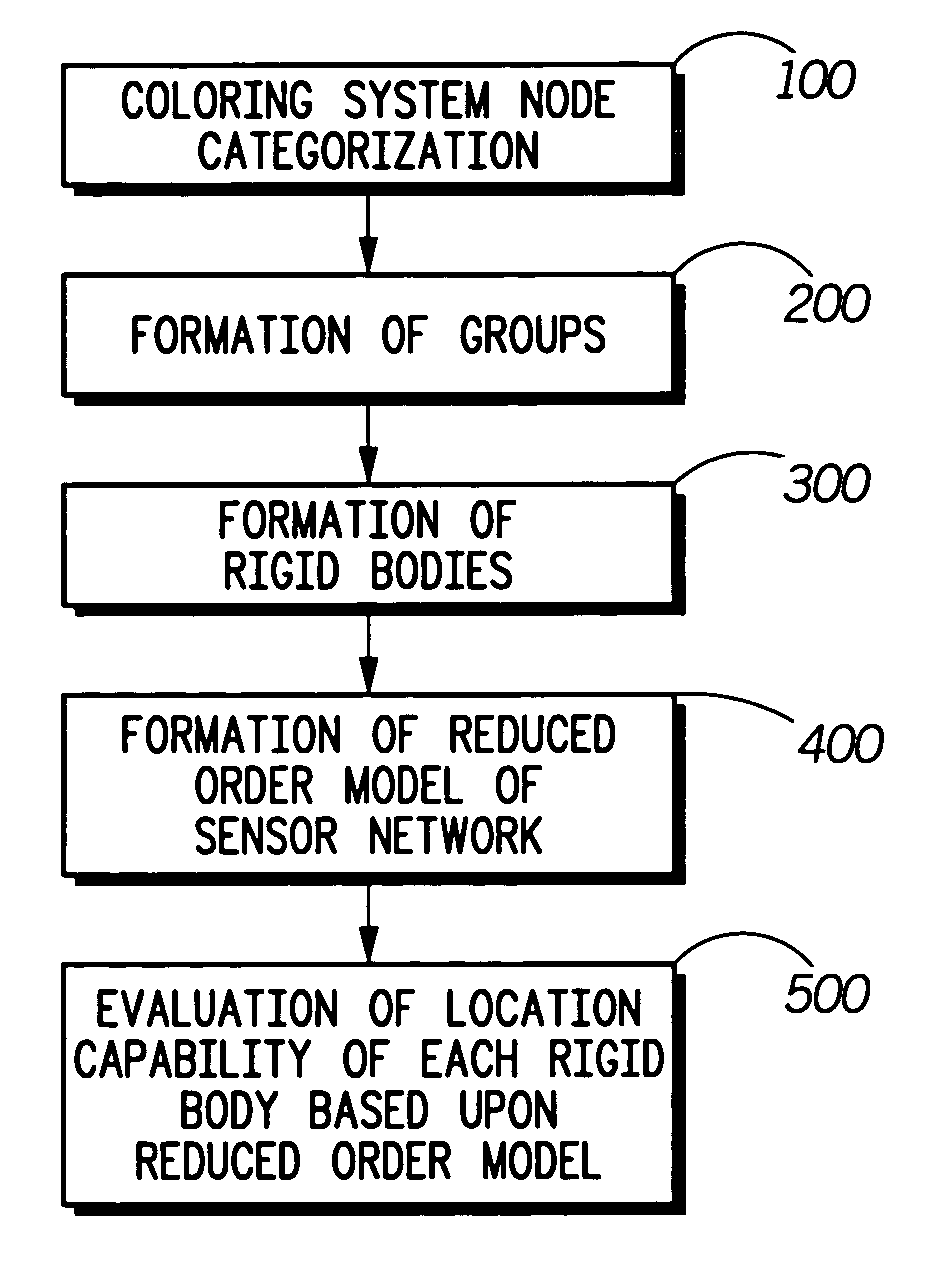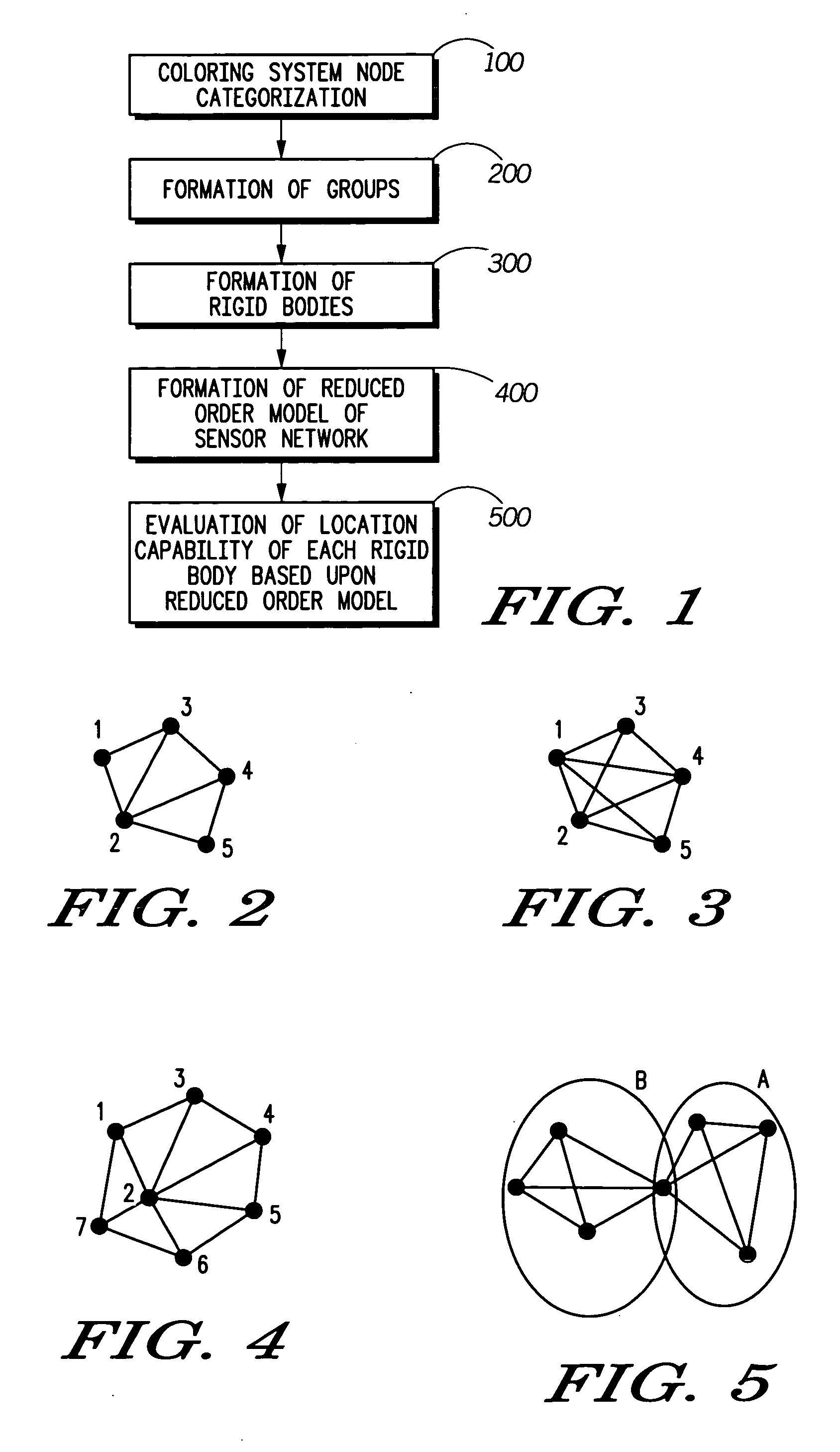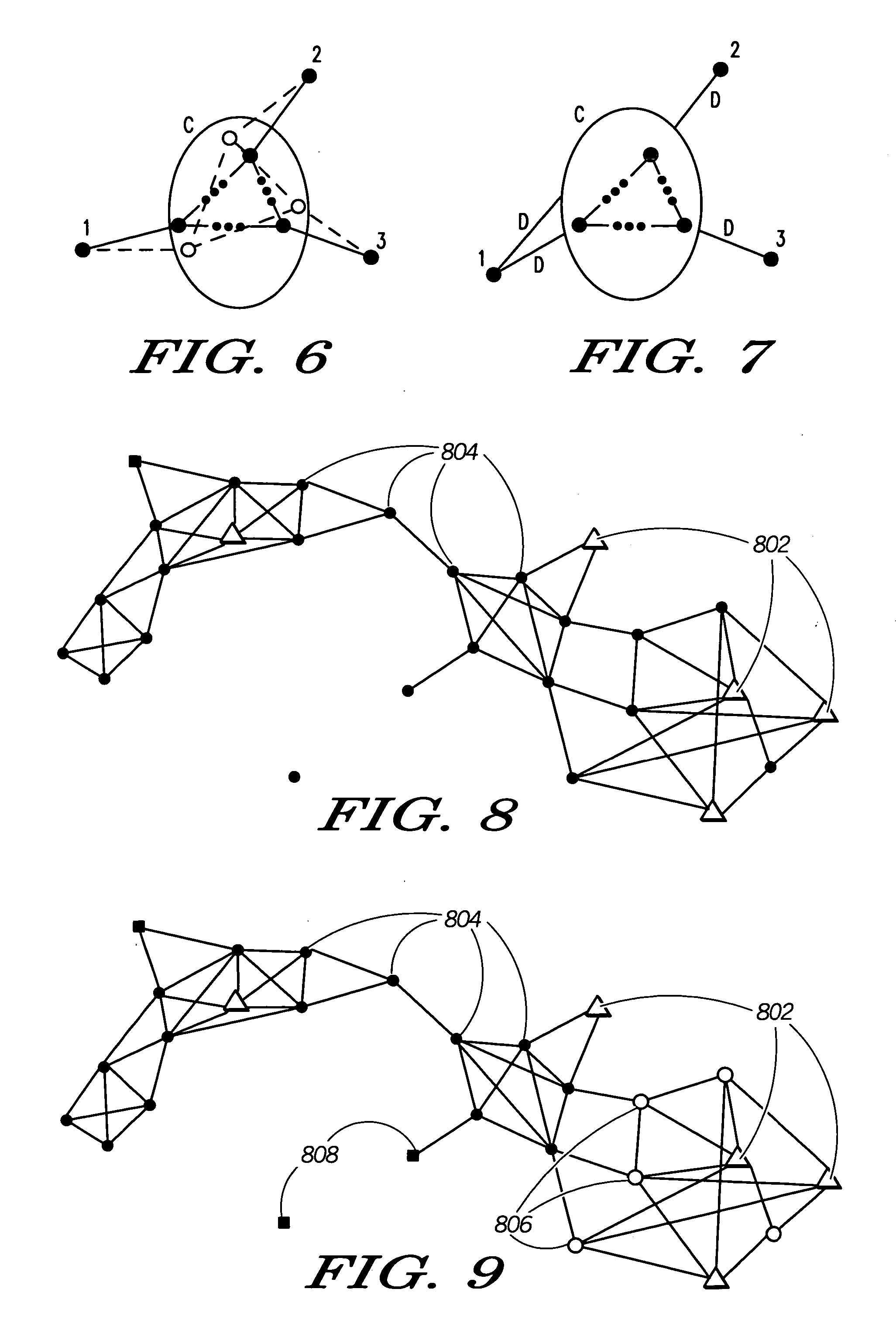Reduced order model node location method for multi-hop networks
a multi-hop network and order model technology, applied in the field of rigid body based location, can solve the problems of increasing the complexity of large networks, affecting the efficiency of multi-hop networks, and many nodes not being able to locate, so as to reduce the degree of freedom in the system
- Summary
- Abstract
- Description
- Claims
- Application Information
AI Technical Summary
Benefits of technology
Problems solved by technology
Method used
Image
Examples
Embodiment Construction
[0032] While the specification concludes with claims defining the features of the invention that are regarded as novel, it is believed that the invention will be better understood from a consideration of the following description in conjunction with the drawing figures, in which like reference numerals are carried forward.
[0033] The present invention forms rigid bodies from the nodes of a distributed sensor network utilizing a Reduced Order Modeling (ROM) of the network. To carry out the modeling, decisions on the locatability of each node, on the order of location for minimum propagation error throughout the network, and on the algorithms that should be employed to achieve best location are made.
[0034] To more efficiently locate nodes in a distributed sensor network, an efficient algorithm is needed for location discovery. To arrive at a decreased space, subsets of nodes can be defined so long as the subsets have a sufficient degree of confidence for locating at least a few of th...
PUM
 Login to View More
Login to View More Abstract
Description
Claims
Application Information
 Login to View More
Login to View More - R&D
- Intellectual Property
- Life Sciences
- Materials
- Tech Scout
- Unparalleled Data Quality
- Higher Quality Content
- 60% Fewer Hallucinations
Browse by: Latest US Patents, China's latest patents, Technical Efficacy Thesaurus, Application Domain, Technology Topic, Popular Technical Reports.
© 2025 PatSnap. All rights reserved.Legal|Privacy policy|Modern Slavery Act Transparency Statement|Sitemap|About US| Contact US: help@patsnap.com



